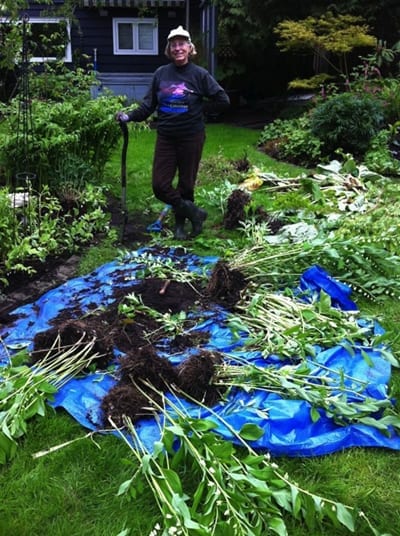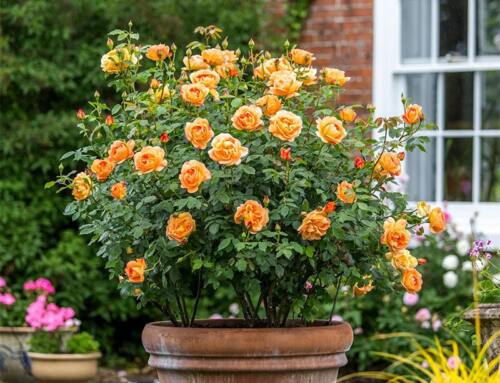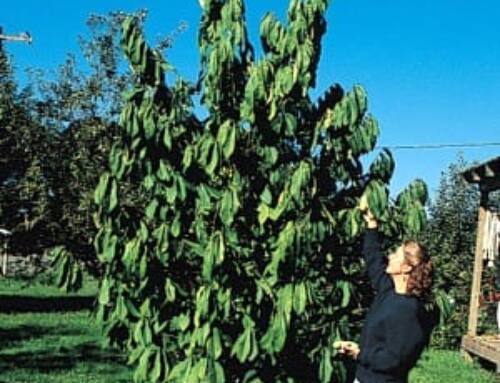The Benefits of Fall Planting
As summer winds down and you have spent most of the season with your garden, you are now keenly aware of your triumphs. You are also aware of the things that didn’t go so well. Perhaps a handful of plants didn’t perform and need to be moved to a different location. Or maybe a whole section of your garden just isn’t working and hasn’t been for years. Or maybe you want to create a brand new garden and replace some of your lawn.
There is a time for caution and there is a time for action. Fall is a time for action. With temperatures cooling and the rains starting, fall is a great time to plant perennials, shrubs, vines, and trees. And since you can clearly see what is and isn’t working right now in your garden — as opposed to trying to remember next spring what you meant to change — fall is the perfect time for a garden renovation while ideas are still fresh in your mind.

As it turns out, fall is not only one of the best times to move existing perennials it is also one of the best times of year to plant new plants in the garden, perhaps even better than spring. Here’s why you should do some fall planting and renovating:
Big Plants: Plants purchased from our nursery in the fall have, for the most part, been growing for an entire season so they are big and full and ready to rumble! These same plants were just little babies in the spring. These big fall plants will establish very quickly in the garden owing to their size and to the favourable fall conditions.
Soil Temperatures: In spring, the soil warms up much more slowly than the air. Cold spring soils can shock plants and set them back by weeks. In the fall, the soil temperatures are warm and inviting for new plantings and their eager roots. Warm soil promotes fast, strong root growth allowing perennials to establish before winter.
Air Temperatures: The warm daytimes and cooler nighttimes offer moderate temperatures that do not stress plants allowing them to quickly overcome transplant shock and establish.
Precipitation: The gradual increase in precipitation through September and October into November results in soils with good available moisture for root establishment.
Length of Time for Establishment: Planting in September and October still gives plants a long time to get settled in coastal BC before the first hard frosts come, usually in December. Even in colder areas of the country, many plants have enough time to establish well if planted in September.
Insects and Garden Pests: Humans aren’t the only ones thinking about hibernating at this time of year. Insects such as aphids and other garden pests such as slugs are becoming less active and will soon die or go dormant for the season. Fall plantings reduce the risk of damage to your plants by garden pests.
Getting a Jump Start: Most people become a bit overwhelmed in the spring with all the planting and garden chores. By planting in the fall you can shorten your spring “to do” list.
Better Displays in the First Full Season: Because perennials, shrubs, vines, and trees establish so well in the fall, your plantings and their subsequent foliage and floral displays will be almost a FULL YEAR ahead of any plantings you make next spring just by planting 6 months earlier. You’ll have bigger, fuller more smashing gardens sooner.
Here are some suggestions for going about your garden renovation this fall:
- Take a walk around your garden and look for an area or areas that most bug you. Make sure the area you choose is a manageable size so you can complete your renovation or new bed in a weekend or two.
- Ask yourself what is and isn’t working in that area — life is too short for plants that you don’t love and for garden areas that are not beautiful. Dig out the plants that aren’t working. If they are worth keeping, save them to plant in another area of the garden or give them to friends. With perennials, make sure to trim off a third to a half of the foliage to help minimize transplant shock. For shrubs whose shape you will not damage by trimming off some of the growth, dig up, trim and move. For shrubs and trees with architectural forms, wait until they are fully dormant to move them and remove only minimal foliage. Remember to add a generous amount of compost or Sea Soil mixed 50:50 with your existing garden soil when planting.
- Now look at the plants that are working in this area. Are they in the right place? Perhaps a plant looks great in this area but is so happy that it’s growing taller than what you expected. If you need to shift some plants in the bed, dig them out with as big of a root ball as possible and place them in a better location.
- Now you’re going to need some new plants. Look at your existing bed and decide what’s missing in terms of height, foliage colour, flower colour, and bloom time. Make a list of your needs and come visit us at Phoenix. If you bring a picture of your garden bed renovation we can help you with some advice for the perfect plants to get this area of your garden spruced up and gorgeous for the upcoming year.
- For your transplanted or newly planted plants, use a transplant fertilizer to get your plants established even faster. At Phoenix Perennials, we have a specially formulated fertilizer to encourage root development with just the right N-P-K ratio plus IBA rooting hormone and kelp, a natural rooting hormone.
Have fun with your fall garden renovation and new plantings!




